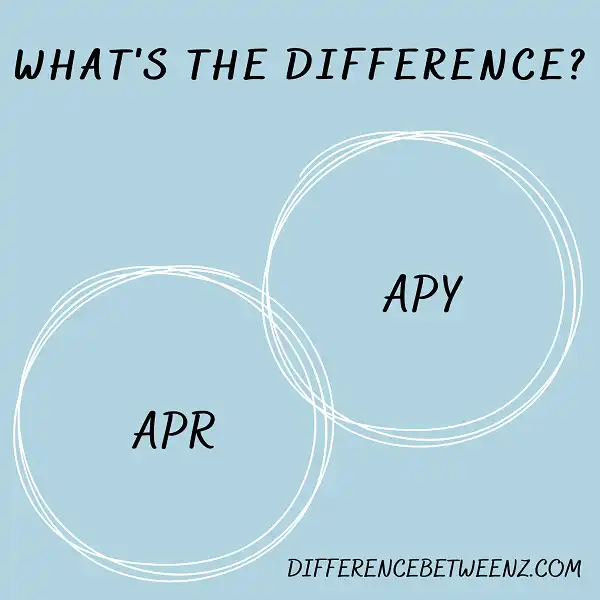There is a lot of confusion about the difference between APR and APY, and a lot of people don’t understand what these terms mean. In this blog post, we will explain the difference between APR and APY and how to calculate each one. We will also provide some examples to help make things clearer. Let’s get started!
What is APR?
APR, or annual percentage rate, is the APR is the rate of interest you’ll pay on a loan – such as a credit card or mortgage – expressed as a percentage of the amount you borrow. APR is usually higher than the interest rate because it includes fees and other costs associated with borrowing money.
For example, if you’re considering taking out a loan for $10,000 with an APR of 10%, you can expect to pay $1,000 in interest each year. The actual amount you’ll pay will depend on the term of the loan – that is, how long you have to repay it.
APR can also be used as a tool to compare different loans. For instance, if one loan has an APR of 5% and another has an APR of 10%, the first loan will likely be the better choice since it will cost less in interest over time. APR is just one factor to consider when taking out a loan, but it’s an important one to understand.
What is APY?
APY stands for annual percentage yield. It’s the rate of interest that you earn on an investment account, like a savings account, CD, or money market account, over the course of a year. APY is different from the interest rate because it takes into account the effects of compounding.
Compounding is when the interest that you’ve earned starts to earn interest itself, and it can have a big impact on your earnings over time. With a higher APY, your money will grow faster because it’s compounding more frequently. For example, if you have $1,000 in an account with a 5% APY, you’ll earn $50 in interest at the end of the year.
But if you have an account with a 6% APY, you’ll earn $60 in interest because your money is compounding more often. That may not seem like much of a difference, but it can add up over time. So when you’re choosing an investment account, be sure to compare APYs to get the best return on your investment.
Difference between APR and APY
APR and APY are both measures of interest, but they’re not the same thing. APR, or annual percentage rate, is a measure of the interest charged on a loan over the course of a year. APY, or annual percentage yield, is a measure of the interest earned on an investment over the course of a year. APR is always lower than APY because APR doesn’t take into account the effects of compounding. Compounding is when the interest earned on an investment is reinvested so that the investment earns interest on top of interest. That’s why APY is always higher than APR; because it includes the effects of compounding, which APR doesn’t.
Conclusion
When it comes to understanding interest rates, it’s important to know the difference between APR and APY. The former is the yearly rate of interest you would pay on a loan, while the latter is the annual percentage yield your deposited funds would earn. Understanding these concepts is key to making smart financial decisions.


